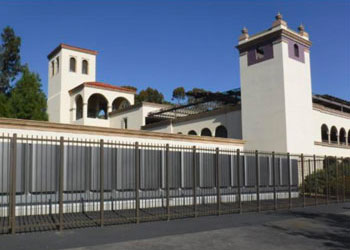As a prominent university in California, the University of San Diego has long worked to find innovative solutions to environmental challenges. Already home to one of the largest private university campus solar installations in the country, USD is widely recognized for its forward thinking sustainability program. In 2016, the University developed its Climate Action Plan, which establishes a framework for reducing USD’s greenhouse gas emissions that contribute to climate change. As a part of this plan the University deployed Bloom Energy Servers, a solid oxide fuel cell technology that generates electricity without any combustion.
Why Bloom Energy Servers?
Considering energy consumption accounted for over 50 percent of USD’s 2010 carbon footprint, lowering emissions in this sector was the program’s primary short-term focus. However, San Diego County also has some of the highest electricity rates in the country, so the ability to meaningfully reduce energy costs was another important factor in USD’s project evaluation process. By 2020, USD aims to reduce emissions by 15 percent compared to 2010 levels and sees installation of Bloom Energy Servers as an important step towards reaching that goal.
Implementation
Bloom Energy Servers generate electricity through a cleaner electrochemical process that reduces carbon emissions by approximately 20 percent compared to the grid and virtually eliminates all SOx, NOx and other harmful smog forming particulate emissions. The end result is cleaner power at predictable costs which provides long-term economic benefits — addressing both the financial and environmental goals of the university. The 1 MW system installed on campus will reduce carbon emissions by 1.4 M lbs per year, the equivalent of taking 136 cars off the road annually. Finally, the project will generate an estimated $3 million in energy savings over 15 years.

